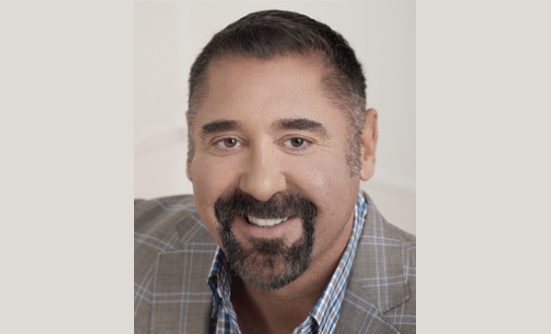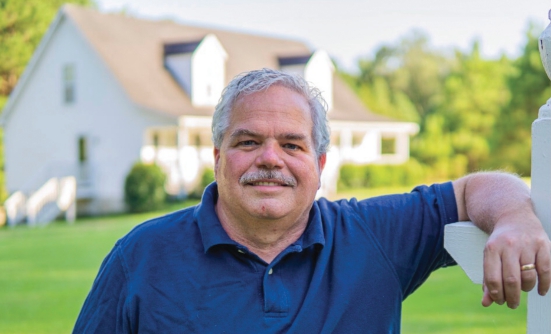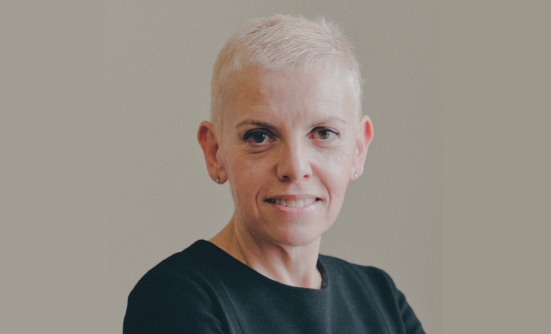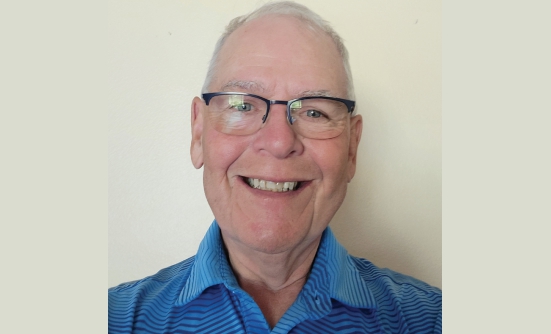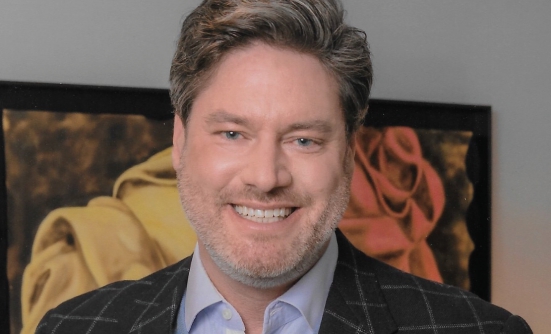Chuck remembers the “no-brainer” moment that turned the tables on his healthcare. “It was a difficult time,” he said 25 years after his cancer diagnosis. “I had to go on disability, I think it was 70% of my income, and I was the primary income for me and my partner, who was in his third year of nursing school.”
“It was a difficult time, just making bills. We were maxing out credit cards just trying to stay above water,” Chuck paused, as his voice trailed off to a time of uncertainty in the relationship.
Today, the discussion of gay men or other sexual minorities and cancer remains a taboo. However, if you are gay or bisexual, there is no better time to educate yourself on the dangers of cancer and its financial side effects.
A 2021 Gallup poll showed that approximately 23 million Americans, or 7.1% of the U.S. population, identify as lesbian, gay, bisexual, transgender, or queer (LGBTQ). That percentage was 3.5% in 2012, when Gallup began tracking LGBTQ data.
The data about cancer screening among LGBTQ people are limited, in part because the CDC, the national Surveillance, Epidemiology, and End Results (SEER) database, and the American Cancer Society don’t collect information about the sexual orientation or gender of patients with cancer.
LGBTQ Barriers to Healthcare
But many gay men and other sexual minorities don’t have adequate healthcare.1 Studies show that gay men often cite 3 barriers to accessing healthcare and cancer screening1:
- Fear of discrimination
- Having no health insurance
- Negative experiences with healthcare providers
Black lesbian, bisexual, and queer women also report negative screening experiences in which they perceived discrimination from their providers.1 Lack of knowledge among healthcare providers about LGBTQ-specific cancer screening guidelines further contributes to insufficient screenings.
The Healthy People 2030 federal initiative (https://health.gov/healthypeople) outlines concerns regarding healthcare disparities affecting sexual minorities, such as that gay men are more likely to attempt suicide than other subpopulations, experience homelessness, and have high rates of tobacco, alcohol, and drug use. Older gay men may face barriers to care because of isolation and lack of support services caused by homophobia and stigma.
Chuck, however, had health insurance through his employer, including a life insurance policy. He also had a good relationship with his doctor. Flipping through a magazine, Chuck noticed an ad offering to buy life insurance policies. It was the light-bulb moment. “I was dying. My partner was calling friends, telling them it’s time to come see me.”
Chuck sold his life insurance policy to his oncologist. “He said, ‘You’ve got nothing to lose,’ and that money really, really provided for us.”
“Once we got it set up, and it wasn’t a huge policy, but it was life-changing for us. It helped us, took the pressure off, so that my partner could finish school. My biggest thing was a feeling of that financial burden lifting.”
Financial Toxicity for LGBTQ People with Cancer
The strain that Chuck felt is known as financial toxicity. The National Cancer Institute defines financial toxicity as “problems a patient has related to the cost of medical care.”
Not having health insurance, or facing medical costs that are not covered by health insurance, can lead to large debts and bankruptcy. Financial toxicity also affects a patient’s quality of life and medical care: a patient may not take the prescribed medicines or may avoid going to the doctor to save money.
A 2013 study indicates that patients with cancer are twice as likely to file for bankruptcy than those who do not have cancer.2
In addition to financial problems, a cancer diagnosis causes emotional and physical stress.3 Research also shows that LGBTQ populations have the highest tobacco and alcohol use rates,3 which are known to increase the risk for some types of cancer. These risks lead to a disproportionate number of LGBTQ individuals living with cancer, including anal, breast, cervical, colorectal, lung, prostate, skin, and testicular cancers.3
Being told he had cancer wasn’t Chuck’s first heart-in-the-throat moment. He was diagnosed with HIV in his 30s. HIV wreaks havoc on the body’s immune system. And a weakened immune system increases the risk of cancer. It was a double whammy.
“I decided I probably wouldn’t see 40,” Chuck said, “and now I’m 65. I’ve had a cancer scare, but I happened to be living in an area that was one of two in the entire country that was doing Pap smears and screening for rectal and anal cancer.”
Chuck felt comfortable discussing his treatment options and financial health with his doctor. But many healthcare providers don’t have conversations with their patients about the costs of cancer treatment.
A recent study showed that only a quarter of patients with cancer understand their out-of-pocket costs.4 By contrast, two-thirds did not remember discussing costs before or during their cancer treatment.4 Patients with cancer often have to initiate a conversation with their doctor about the costs of their treatment.
Poor communication between doctor and patients often causes patients to overlook less-expensive, but highly effective, treatments. The result is that patients have unnecessary financial stress because of a lack of communication.
HPV and Cancer
In February 1985, a New York Times article first mentioned the human papillomavirus (HPV). Scientists, including Nobel Prize winner Dr. Harald zur Hausen, linked HPV with cancers of the cervix and vulva. The article suggested that this knowledge would lead to the development of a vaccine against the virus to prevent cancer.
But it took 20 years to develop a vaccine, called Gardasil, which was approved by the FDA in 2006 for girls and young women, and in 2009 for boys and young men to prevent HPV infection. In 2020, this vaccine was approved to prevent anal cancer from HPV infection in females and males aged 9 to 26 years.
Today, researchers still lack scientific data to demonstrate HPV’s ability to be transmitted through anal sex in men or via female-to-female contact. There also is scant information about HPV’s link to squamous-cell carcinoma in gay men and in lesbians.
Most gay men are aware that sexually transmitted diseases are spread through receptive anal intercourse, but a 2010 study (the most recent evidence available) indicated that only about 25% of gay men knew that HPV infection also spreads that way.5 Although no new evidence about this is available, it is likely that many more gay men are now aware that HPV infection is a sexually transmitted disease.
HPV infection is estimated to be present in about 65% of gay men without HIV, and in about 95% of those who are HIV-positive.5 According to the National LGBT Cancer Network, HIV-positive gay men are about 40 times more likely than other men to have anal cancer. Treatment and vaccination can decrease by about 80% the chance of having or dying from anal cancer.6
Danny, a 58-year-old self-proclaimed “health nut” was floored when he was diagnosed with colorectal cancer. It was not clear that HPV was the cause, but there is evidence linking HPV infection and colorectal cancer.7
Sure, Danny had a cigar and a few fingers of whiskey on occasion, but he was not a regular smoker or a heavy drinker. His diet was the epitome of healthy living. “Hell, I do more yoga and trail biking than anyone in my circle,” he boasted. “It took a long time to accept that my immune system wasn’t as strong as I believed.”
Overwhelmed by Cost of Treatment
The next blow for Danny was the cost of treatment. Even with insurance from a “well-known company that covered most of my care,” Danny said that the bills mounted. So he talked with friends and family, who arranged fundraisers. Finally, he consulted with a financial advisor; bankruptcy was an option.
“I was overwhelmed,” Danny said. “I was not prepared for the cost after treatment. My part of the insurance [copays, co-insurance], that wiped out my savings. We were able to raise some money, but there was still a lot that had to be paid. I was not prepared to lose everything.”
During his conversation with the financial advisor, Danny listed his assets, including a life insurance policy. The advisor asked if he had considered selling the policy. “I did not know that was an option,” Danny said. “Life insurance is for after you pass away.”
He added, “For me, cashing in my policy was the answer that fundraising, credit cards, and a second mortgage did not make sense. I was able to pay the doctor bills, and I was able to pay off other debt and focus on my health.”
Your Life Insurance Policy
If you’re facing mounting healthcare bills, selling your life insurance policy may solve the problem. A recent article noted that low-income families, uninsured people, and blue-collar workers with medical bills amounting to 4 times their annual salaries are unlikely to afford their cancer treatment costs.8
Even if your health insurance covers the treatment, there are still typical out-of-pocket costs, including pre-deductible expenses, co-insurance, and copays. Other expenses include travel to treatment, lodging, food, in-home care, and rehabilitation.
A secondary market exists for selling life insurance policies. By law, your life insurance policy is like a piece of property. So, if you own a life insurance policy, you can:
- Change the beneficiary (unless the policy has restrictions)
- Use the insurance policy as collateral for a loan
- Borrow money against the insurance policy
- Sell your insurance policy to another person or entity
A settlement allows you to sell the insurance policy and use that money for any financial needs. The buyer will assume future payments of the policy premiums and in exchange will own the policy and receive its benefit.
The cash payment is less than the actual death benefit, but it is more than the surrender value, and the original policyholder no longer has the expense of paying premiums. This option provides immediate cash to pay for your financial needs.
“We educate consumers about the option of selling the policy today—eliminating the need to continue paying premiums and provide the money to make life better,” said Wm. Scott Page, CEO of LifeGuide Partners. “It’s about having options. People have been converting or selling their existing life insurance policies for years.”
“LifeGuide does not profit when you die,” Scott said. “However, we hope that our clients will use the funds to fight for life, and if there is anything we can do to help, we will.” In the early 1990s, Scott’s partner died of AIDS, so he understands financial toxicity.
LGBTQ Caregivers
Statistics show that LGBTQ caregivers often have chronic illnesses themselves, making them more vulnerable to the stress of caregiving.9 These caregivers are also more likely to be of lower socioeconomic status, young, racially and ethnically diverse, and less likely to be married than other people.
LGBTQ caregivers are also less likely to use available resources to manage their stress, and are more likely to have poor physical and mental health than heterosexual people.9
Stress and Health
“I had stage IV colorectal cancer and was suffering from the stress of finances, the stress of a life-threatening disease,” said Mary, who was diagnosed in 2019. “I was consumed with dread and worry.”
“I worried we would be destitute,” she added. “My attorney asked about life insurance as a way to pay for my treatment. I’d taken out a life insurance policy as part of our estate planning. I wasn’t even thinking about the policy, and when he mentioned it, I was just floored—‘my God, that’s right!’”
“We jumped right in and made it happen,” Mary said. “I decided to sell my policy, and it took an enormous amount of stress off me.”
Although many patients with cancer want to discuss the cost of cancer treatments with their doctors, less than half of oncologists and few patients actually have such discussions.4
As noted earlier, patients with cancer are more than twice as likely to declare bankruptcy as healthy people.2 And patients with cancer who declare bankruptcy are 80% more likely to die from cancer than nonbankrupt patients.10
“The mental toll of cancer, paying bills—it’s hard,” Mary said. “I had business concerns, financial concerns, health concerns. It was gut-wrenching.”
“Quite frankly, I should not be here, but I am.”
Selling Your Life Insurance Policy
If you consider cashing in your life insurance policy, know that state regulations protect the majority of Americans who do so. Converting a life insurance policy into cash is straightforward and includes:
1. Getting an appraisal of your case, including your medical situation and your life insurance policy to determine how much money you may be eligible to receive. Remember, after you sell your policy, you no longer pay the premiums; the new policy owner pays all future premiums.
2. Receiving a formal purchase agreement from a licensed and regulated buyer who will answer any questions you may have. The amount offered is contingent on the buyer’s perceived value of your policy, and your life expectancy.
3. Accepting or rejecting the offer based on your circumstances. When you sell your policy, you receive a lump sum of money from the new owner of the policy. If you reject the offer, you still own your policy and continue to pay the premiums.
Healthy Choices
Make the lifestyle changes that can truly make a difference in your daily life. Be an example of making healthy choices for the next generation of the LGBTQ community. Pride is not a choice, but being a healthy member of the community is. Love yourself first, and take advantage of any financial assets at your disposal.
References
- Dahlhamer JM, Galinsky AM, Joestl SS, Ward BW. Barriers to health care among adults identifying as sexual minorities: a US national study. American Journal of Public Health. 2016;106(6):1116-1122. www.ncbi.nlm.nih.gov/pmc/articles/PMC4880242/pdf/AJPH.2016.303049.pdf.
- Ramsey S, Blough D, Kirchhoff A, et al. Washington State cancer patients found to be at greater risk for bankruptcy than people without a cancer diagnosis. Health Affairs. 2013;32(6):1143-1152.
- Quinn GP, Sanchez JA, Sutton SK, et al. Cancer and lesbian, gay, bisexual, transgender/transsexual, and queer/questioning (LGBTQ) populations. CA: A Cancer Journal for Clinicians. 2015;65(5):384-400.
- Tur-Sinai A, Bentur N, Urban D. Out-of-pocket spending for cancer medication, financial burden, and cost communication with oncologists in the last six months of life in Israel. Healthcare. 2021;9(9):1120. https://doi.org/10.3390/healthcare9091120.
- Brewer NT, Terence WN, McRee A, Reiter PL. Men’s beliefs about HPB-related disease. Journal of Behavioral Medicine. 2010;33:274-281.
- Deshmukh AA, Chiao EY, Cantor SB, et al. Management of precancerous anal intraepithelial lesions in human immunodeficiency virus–positive men who have sex with men: clinical effectiveness and cost-effectiveness. Cancer. 2017;123(23):4709-4719.
- Hsu CH, Lin YJ, Chen YC, et al. Human papillomavirus and risk of colorectal cancer: an analysis of nationwide claims data. Medicina. 2022;58(10):1461. www.mdpi.com/1648-9144/58/10/1461.
- Yabroff KR, Bradley C, Shih YCT. Understanding financial hardship among cancer survivors in the United States: strategies for prevention and mitigation. Journal of Clinical Oncology. 2020;38(4):292-301.
- Anderson JG, Flatt JD, Jabson Tree JM, et al. Characteristics of sexual and gender minority caregivers of people with dementia. Journal of Aging and Health. 2021;33(10):838-851.
- Ramsey SD, Bansal A, Fedorenko CR, et al. Financial insolvency as a risk factor for early mortality among patients with cancer. Journal of Clinical Oncology. 2016;34(9):980-986.





